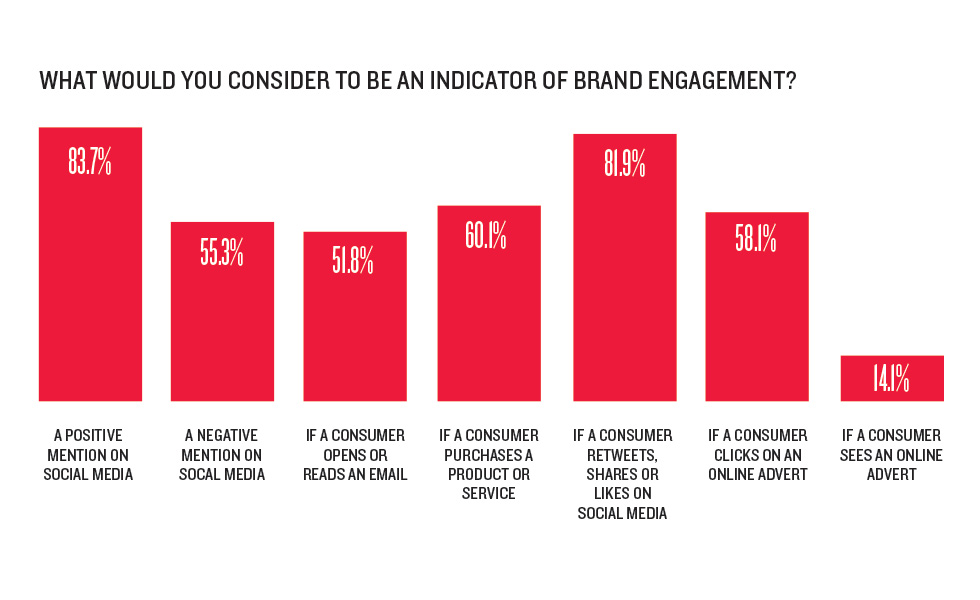Brand Loyalty - How Easy is it to Achieve?
We all value loyalty – it’s one of the main reasons people get dogs as pets. It’s also why brand loyalty is such a prized accomplishment when brand building.
When a brand achieves brand loyalty, it successfully builds a base of consumers who return, time and time again, to the same brand whenever they are looking for that product or service.
For many brands, however, loyalty as a goal is viewed as a far-off and low-probability achievement, something “that would be nice one day” or “we’d love to get to that place” and filed away as low priority due to its seemingly bumpy road to the finish line.
Why is this so often the case? Why do brands dismiss or doubt their ability to craft a brand that connects with their target audience in such a way? Those brands who have achieved the highest level of consumer loyalty are revered to a point where they are looked at more as myths than relatable situations. Framed as shooting stars within the branding world, these brands are disconnected by many observers from the path they took to reach that point. The struggles, the work, the behind-the-scenes brand development are forgotten by outsiders, and instead the story of overnight success comes to the top, which, for any brand builder, is a definite fantasy.
But fear not, brand creators. Achieving brand loyalty can be done. The first step is to believe that it can be done, and be done with the brand you will have – take the aforementioned reasons for dismissing and take them out of the equation. That is the first step, and the most important.
Once you have checked the box on believing in the brand, the next step is to incorporate this mindset into the brand building.
There are two main options to which a achieve brand loyalty – both of which start at the same place: choosing a distinct end point for the brand. That is, at the end of the day, decide where you want your brand to live in the minds of your consumers.
The first destination is to become the leading brand in your space. Determine the niche where your brand will live, and position it as the premier option. Consumers place high value in quality, and if they find a brand that they feel will give them not only the best experience, but also the sense of peace in consistently top quality, it will immediately jump to the top of the list. Being the leader doesn’t mean just having the best product, it also can be viewed from a customer experience standpoint – in fact, providing a best-in-class customer experience should be at the top of the list for brands. Not only can it elevate your retention and loyalty chances, but it can also bleed over and be a vital aspect of the next option to brand loyalty achievement.
Although harder to quantify, this option is one that will provide the most loyal of brand loyalists - set out with the goal of creating and securing a deep, emotional connection with your audience. These consumers will ride with the brand through the ups and the downs, and will be the most willing to give the benefit of the doubt when negative events occur. These brands make consumers feel a certain way – in addition to satisfaction with the product or service itself, this emotional connection resonates outside of the direct interaction.
Brands can be given a level of loyalty by consumers, where they can rest easy knowing their core base is secure. First, they must believe in the brand and its potential – then, they should set out to build a brand that stands out in the minds of its audience.
Achieving #brand loyalty can be done. The 1st step is to believe that it can be done, & with the brand you will have https://t.co/8rfEMzeDzD pic.twitter.com/R4M9EbLroc
— Addison Whitney (@AddisonWhitney) September 19, 2016
When Less is More in Logo Design and Visual Branding
As brands and logos have evolved over the last several years, it’s become evident that simplicity and minimalistic design is a key new direction for modern brand marketing. Even the most iconic brands and logos are following the mindset of “less is more” when it comes to their designs. From less detailed images to geometrically-inspired outlines, brands are embracing a clutter less existence.
One of the most prominent features of this trend involves tweaking, or in some cases, totally removing, the typographic element of the logo. In a recent article, author Kalle Oskari Mattila examined this shift, highlighted by MasterCard’s recent rebranding, in which their new logo was de-emphasized with the state goal to do away with the text altogether within the logo.
There are a number of good reasons to embrace “less is more” logo design. From a practical standpoint, cleaner and less-cluttered logos are more versatile and work much better on the myriad of platforms on which modern logos must perform. Logos are needed in smaller and smaller iterations, where the decrease in size must not impede the logo’s clarity or ability to represent the brand.
This is especially true when it comes to text – there is a reason why few app logos have any text – as the logo gets smaller, text can quickly turn into a jumbled blob that takes up space without providing real value.
Therefore, if you are a brand with a logo or a visual brand that has the equity to stand on its own and earns immediate recognition from consumers, the choice to “slim down” is a relatively easy one. Some of the biggest brands out there have gone this path – from the McDonald’s golden arches and Nike Swoosh to Starbucks and MasterCard with their own logos.
However, as a new or lesser-known brand, it would be advisable to proceed with caution in this aspect of brand development. It is logical that the removal of a brand name from a logo would decrease ease of recognition and connection between brand and logo, which is a step that is crucial in building a brand. Mattila deems the “debranding” strategy as one “based on paring down that can only be deployed by the most identifiable of brands.”
Additionally, Matilla explains that “Some marketers believe that debranding can make global brands appear ‘less corporate’ and ‘more personal to consumers.’” This personalized feel in corporations is a direct reflection of the way technology and new companies are headed. This is one way for larger, older brands to stay relevant and directly target younger generations with the goal of having them continue using products their grandparents and parents use.
Coca-Cola’s early success with debranding is one of the most prominent examples, namely the “Share a Coke” promotion, where the brand replaced the Coca-Cola name on its bottles for a massive variety of people’s first names, in addition to nicknames and monikers. The campaign was a massive hit with consumers, who sought out bottles which featured their names or the names of loved ones, and provided Coca-Cola with a personalized stamp on each of their products, by simply backing away from the branded aspect and replacing it with an element that connected deeper.
Going with a simpler visual brand and separating text from logos signifies confidence in brand familiarity and its consumers. Debranding takes this a step further by not only showing the consumer that you feel your logo has the equity to stand on its own, but also allowing for an expansion of personalized and authentic branding efforts, designed to strengthen the connection between consumer and brand.
AW in Review - Addison Whitney Brand Salsa Recap 9.9.16
Welcome to our initial September edition of the AW in Review, our roundup of our latest brand salsa and Addison Whitney news and posts!
Don’t forget, you can stay up-to-date with everything from Addison Whitney by joining the conversation with us on our social media channels – Twitter, Facebook, LinkedIn and Google+.
A Cup Of Sugar And Branding Advice – Two Things You Can Get From Your Neighborhood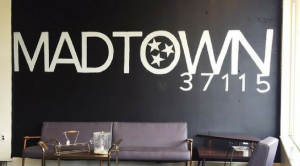
What if I told you that organizations and products across the marketplace could take branding advice from a collection of neighborhoods in Nashville?
In line with a recent trend in demographic identity, the residents are beginning to attach their neighborhood with their own personal brand. In doing so, they have hit a sweet spot in branding, achieving two foundational achievements in building a successful brand. Read More...
Patience Is A (Branding) Virtue
Simply put, brand development is a practice in patience and the ability to stay the course. When creating a brand, especially during the strategic development phase, the end goal may seem a million miles away.
Along those lines, there may be some bumps in the road on the way to success, which will undoubtedly cause some to begin wondering if and when the strategy should be abandoned. Read More...
How To Build Your Brand Portfolio Using A Flagship Brand Strategy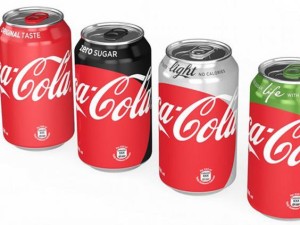
Some organizations are making a strategic brand decision to use elements of a flagship brand as “boosters” for its complementary branding.
For many brand portfolios, this strategy is a far-off dream, only available if and when their main brand achieves a level of notoriety and positive brand connotation where it can be enabled to carry over into the space of additional brands. So how can those without a global icon at the helm of the brand ship take advantage of whatever boost may come from its main brand? Read More...
Finding The Connection: How A Brand Name Can Help Tie Your Brand Together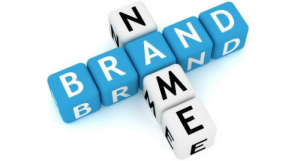
Congratulations, you’re a parent! Bringing to life a pristine new entity created from scratch, it’s your brand. And like all things birthed into magnificence and destined to prosper, it needs a name.
But when namer’s block kicks in and you are staring at a trash can full of crumpled wads of fizzled ideas, it’s probably because you’re brainstorming too broadly. Read More...
A Cup of Sugar and Branding Advice - Two Things You Can Get From Your Neighborhood
What if I told you that organizations and products across the marketplace could take branding advice from a collection of neighborhoods in Nashville?
After the confused looks and wondering if I’ve lost my mind, I’d tell you that these neighborhoods have identified two of the main tenants in branding, and have put the full force of their efforts behind raising the bar within their market.
 Collectively, the geographic areas involved make up the city of Nashville. Which in of itself is a strong brand and a well-known place. People are proud to identify themselves with the city as a whole and everything it offers. But within Nashville resides a number of smaller, more geographically-focused neighborhoods, each offering its own unique elements and characteristics.
Collectively, the geographic areas involved make up the city of Nashville. Which in of itself is a strong brand and a well-known place. People are proud to identify themselves with the city as a whole and everything it offers. But within Nashville resides a number of smaller, more geographically-focused neighborhoods, each offering its own unique elements and characteristics.
In line with a recent trend in demographic identity, the residents of these areas are beginning to attach their neighborhood with their own personal brand. In doing so, they have hit a sweet spot in branding, having achieved two foundational achievements in building a successful brand.
First, they’ve established strong brand identity, one that is built on its own characteristics while at the same time creating emotional connections with their audience. There is a natural, built-in connection with one’s home and local area, and to create a brand built on this gives the neighborhood instant brand ambassadors.
Willing to stake their own personal identity on their neighborhood brand, these residents boost its strength and increase the differentiation of the brand amongst its peers. As Nashville designer Tim Park said, “"I think the people here are so dang proud of their neighborhoods that they want to shout it to the rooftops.”
Brands everywhere can often only dream of possessing such loyalty and enthusiasm, where their audience not only relates internally, but invests their own effort to help spread the brand outside of its initial reach.
Additionally, these brands have eased the ability to spread the brand through well-thought-out, creative names and logos. In addition to all of the well-established reasons why a visual and verbal brand is vital for success, these elements serve as a resource for the aforementioned brand ambassadors. They may have all the enthusiasm in the world to spread the brand, but the addition of tangible brand elements makes it that much easier.
These neighborhood names and logos serve another purpose as well – they all highlight what makes the area unique. They serve as conversation starters and sources of information that further increase the presence of the brand.
For instance, the logo for the Hillsboro-West End neighborhood in Nashville showcases well-known landmarks within its borders. Visitors viewing the logo for the first time are immediately  informed that the neighborhood boasts a number of famous places of interest, while also establishing where in the city the neighborhood resides, an important piece of information for any place.
informed that the neighborhood boasts a number of famous places of interest, while also establishing where in the city the neighborhood resides, an important piece of information for any place.
This is a lesson that can be transferred into a number of branding spaces. When creating a new name or logo, look at what makes your brand stand out – how can these two elements tell the story of your brand? Don’t waste the opportunity and create a name or logo where the connection has to be explained to the audience.
So the next time someone says that their brand was influenced by a place called “Madtown” or a logo showcasing a prominent street sign, take their word for it. They might just be on to something.
Learn more about building your best brand portfolio strategy by downloading this FREE webinar, "Identifying The Opportunities In Your Brand Portfolio - Are You Capitalizing On Every Potential Business Opportunity Your Portfolio Provides?"
How to Attach Your Brand to Moments in Consumers' Lives
A recent Adweek article discussed how brands are using non-traditional marketing and advertising strategies to target students going back to school, especially those in college.
One key takeaway from the article is how these brands are using their advertising efforts in part to align themselves with specific moments within a student’s time at college. As seen in the image below, such brands as Tide are looking to become the brand connection with moments like the first time a student does their laundry.
 There have been many words written and discussed about the importance of emotional connection in branding, where brands set forth a goal to establish an emotional bond with a consumer over time. But these brands are going even bigger, looking to not only fill the space with a consumer in the moment, but also needing to create the inclination to connect a brand to that moment.
There have been many words written and discussed about the importance of emotional connection in branding, where brands set forth a goal to establish an emotional bond with a consumer over time. But these brands are going even bigger, looking to not only fill the space with a consumer in the moment, but also needing to create the inclination to connect a brand to that moment.
Most consumers don’t naturally have a specific brand in mind when they are performing normal, everyday tasks. You need to load the dishwasher? Your mindset is normally more on the task itself than what brand dishwasher soap you will need to buy.
This is where moment branding does the heavy lifting.
As previously mentioned, the first goal of successful moment branding is to establish the brand connection. Make your brand THE first thought of an individual in the moment, surpassing the general, task-focused mindset that naturally exists. For instance, the “defining moments” image connects “signing first lease” with Citi. For the majority of first-time home owners, their mind is full of thoughts of down payments, mortgage fees, interest rates, etc. In other words, far from thinking of what brand they can leverage.
By positioning themselves as the expert/top brand in the space, Citi can move themselves up the mindset pecking order, grabbing a portion of the thought process, and in turn raising the profile of their overall brand.
A level of emotional connection cannot be ignored, however. This is the bridge from moment to brand. It’s not enough to simply associate yourself with a task such as laundry, but you must become that moment’s iconic brand. Settling for second place only ensures that your competition will reap the benefits of the moment. It takes work to make the moment brand-worthy, there isn’t enough available to hope that the consumer considers all of the brand options.
We all remember our first time cooking in the dorms, and at the same time, can remember what our first requirement for deciding what to cook – ease. College students with limited culinary skills and equipment are less concerned with the intricacies of cooking; they want something easy and fast. Kraft, in their moment branding efforts, saw this as an opportunity to connect. Their “Easy Mac” and other dorm-friendly options were situated ideally for the audience and the moment. Therefore, Kraft positioned these brands as the go-to for college chefs.
Done successfully, moment branding can have long-lasting and wide-ranging impacts on a brand and on consumer mindsets. Our lives are full of both significant and mundane moments, each of which possesses the potential for brand connection. Once we begin associating specific brands with each moment, these brands will have one less person to try and market to, as they have become synonymous with our lives.
Learn more about building your best brand portfolio strategy by downloading this FREE webinar, "Identifying The Opportunities In Your Brand Portfolio - Are You Capitalizing On Every Potential Business Opportunity Your Portfolio Provides?"
Patience is a (Branding) Virtue
“He that can have patience can have what he will.”
While many don’t consider Benjamin Franklin, the source of this quote, to be a master in branding and brand strategy, but the inventor of bifocals touched on a very important brand lesson when he spoke these words.
Simply put, brand development is a practice in patience and the ability to stay the course. When creating a brand, especially during the strategic development phase, the end goal may seem a million miles away. Along those lines, there may be some bumps in the road on the way to success, which will undoubtedly cause some to begin wondering if and when the strategy should be abandoned.
That time should be the last thing on the mind of those working on the brand’s development, as they should instead be focused on staying the course, allowing the brand time to build and grow into the final draft that everyone is working toward.
And while it is marked with very specific, brand-boosting moments such as logo reveals and brand name launches, it is important to not get sucked in to the mindset that these momentary brand bumps are a long-lasting sign that the brand has reached is pinnacle.
In a recent article, Fred Moore touched on this very topic, discussing how, despite the normal expectation of short-term success, establishing a strong brand isn’t a quick fix:
“I tell clients that based on my experience, it takes about three years for a brand to become vested in the minds of the customer,” he says. “Clients tend to feel pressured to produce more short-term results. It is your job to keep the client ‘on strategy’ for the sake of their brand.”
Moore’s mention of consumer mindset is a key point in why brand patience is crucial. The marketplace is filled with similar brands to yours, and as such, it can be easy for consumers to blend them all together or get confused to which brand is which – at least at first. For those brands that have a solid foundation in place and have successfully created a brand that differentiates itself form the competition, finding a space in the consumer consciousness will be achieved quicker, albeit still not right away.
Touching on Franklin’s quote one more time, we see that he ends it with “can have what he will.” In other (branding) words, patience also allows for a brand development that shoots even higher than a short-term-focused brand. if you are in the mindset that time is your friend , not enemy, your brand will have more time to really expand its definition of success.
So when starting to develop a brand, be sure to always keep one eye toward the future, as that is where you will find true brand success.
Learn more about building your best brand portfolio strategy by downloading this FREE webinar, "Identifying The Opportunities In Your Brand Portfolio - Are You Capitalizing On Every Potential Business Opportunity Your Portfolio Provides?"
Brand Engagement in an Ever-Connected Marketplace
 In the not-so-distant past, brand engagement was, like most media and advertising efforts, easily calculated, tracked and controlled. Advertisements were seen for a specific time frame by a set number of consumers, products were featured through in-person demonstrations in stores and malls, where the brands themselves drove the interaction and could control when and how they were perceived.
In the not-so-distant past, brand engagement was, like most media and advertising efforts, easily calculated, tracked and controlled. Advertisements were seen for a specific time frame by a set number of consumers, products were featured through in-person demonstrations in stores and malls, where the brands themselves drove the interaction and could control when and how they were perceived.
This is no longer the case. Today, brands are faced with both the ease and the issues that come with online brand engagement opportunities, where measurement is tracked via software programs and engagement rates are dependent on the consumer.
Marketing Week recently released the results of a survey on how companies indicate brand engagement. The results are telling – all seven of the top results are tied back into online and social media marketing, where the engagement is indicated by an action taken on the part of the consumer.
Not only does this indicate a shift in the power structure for brand engagement, but it also shows how frequent these engagements can take place. Social media mentions don’t follow a schedule – they can occur 24/7/365, just like email opens and online advertisement clicks. Additionally, the multi-faceted engagement opportunities provide for one consumer to engage a brand through multiple channels within a short time frame.
One of the main benefits of this constant connectivity resides with those looking to improve their brand sentiment. Brand engagement is often the fastest way to change perception about a brand, especially with individual users. Therefore, in a day and age when these same users have the opportunity for countless brand engagements online in a brief amount of time, therein lies the opportunity to turn negative sentiment into positive quickly through on-point and successful brand engagement strategies.
And yes, this same principle can have the opposite impact. Just as a brand can take a step forward in the brand perception department, so too can a brand take ten steps backward by virtue of a brand engagement misstep.
For brands, these changes result in a growing need for consistent brand performance, across all channels for an extended period of time. When the consumer controls the timing of engagements, the brands can’t let their guard down, allowing for an interaction to occur when they aren’t at their best. Whether this is an ill-advised social media post, a website issue, a less-than-perfect email campaign, or any other action that leaves the door open for negative engagement, brands who succeed in this area of their strategy are constantly vigilant in this area.
Learn more about building your best brand portfolio strategy by downloading this FREE webinar, "Identifying The Opportunities In Your Brand Portfolio - Are You Capitalizing On Every Potential Business Opportunity Your Portfolio Provides?"
3 Ways a Strong Brand Can Bring Your Organization Together
Not only can a strong company brand drive consumer and market success, but it can also have a positive impact from within the office walls. Whether it’s through initial brand development or a rebranding effort, the creation and implementation of a strong brand will have a unifying effect on the organization as a whole.
Although often overlooked, here are three ways a strong brand can serve to make your organization stronger and more successful:
- Unite behind a common goal
A strong overall brand should include the definition of what a brand stands for and their overall mission – what success means to them. For employees, the knowledge that their work and their role in the organization has a definite end goal and purpose will allow for a more unified and inspired workforce. Organizations thrive when everyone is following a similar path and know what success looks like, and this aspect of a strong brand gives the employees just that.
- Something to write home about
Never underestimate how pride can strengthen an organization. Pride in the product, pride in the people, and yes, pride in the brand. Whether it’s a logo is a visual gem, or a new brand name that encompasses perfectly what the organization represents, when an organization is made up of people who are proud of the brand and feel good about connecting themselves with that brand, the entire organization benefits. Keep this in mind when creating the entire brand, not just these elements. Employee feedback and input can be a valuable piece of the brand development process, providing insights into how potential brands would go over within the organization.
- Keeping a steady stream of friendly faces
It’s not enough to bring in outstanding talent to an organization – it’s also vital to keep those talented employees within the company for a long time. In today’s fast-paced employee world, where job changes are commonplace and longevity within one organization is becoming more rare, potential and current employees care about the organizational brand. The best of the best have a number of options available for their services, and often a choice comes down to the details – that’s right, such as a strong brand. Another benefit is the brand can be shown off and exhibited early on in the hiring process, from consistent email signatures to an office space that carries and shows off the brand.
Organizations face a multitude of attention-needing issues and problems each day, that take time and effort to work on. They are also tasked with keeping an eye on what’s coming next, to properly prepare the organization for future success. They need assistance in whatever area possible, and a strong brand can be the ticket for organizational unity and consistency, freeing up a crucial aspect of managing your company.
How to Ensure Smart Branding Evolution
If you’ve been walking almost anywhere outside the past few weeks, you’ve undoubtedly either seen or almost run into someone on a beeline trek with their head in their phone, searching for a nearby Pokémon character. The Pokémon Go craze is in full force – it’s everywhere you look in real life, and now is making its way into the business world. Brands are using the phenomenon in their marketing, advertising and product development decisions, hoping to ride the coattails to success.
But some brands are still standing on the sidelines and out of the fray. Their brands are uninfluenced by the latest sensation to grab the public’s attention. Instead, they are hoping to stand out by 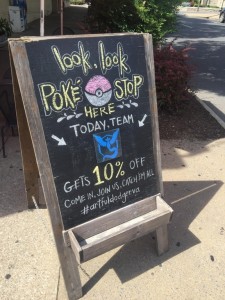 standing out – a strategy of being unique doing the very things that were commonplace a month ago.
standing out – a strategy of being unique doing the very things that were commonplace a month ago.
From a branding standpoint, there is a definite risk involved here. When brands don’t latch onto a trending topic or event, there are going to be those in the marketplace who will see this as being out of touch or having an inability to adapt. These brands will reap the benefits of those caught up in the mass hysteria, while turning their nose at the brands that aren’t playing the game.
However, one of the most sought-after brand characteristics is stability, and these brands are showing the have it. Staying true to themselves, trusting in their brand strength, staying the course in their brand persona – these are just a few of the nails they are hitting right on the head when it comes to building a strong brand.
Now, this isn’t to say that every new successful trend should be avoided at all costs by strong brands. There are some that come around that are perfect fits and should be capitalized upon. But the distinction lies in the fit – change for the sake of change and being “hip” just because everyone else is doing it is a one-way ticket to weakening your brand.
Being a strong brand isn’t synonymous with being rigid and unwilling to change; in fact, it should be flexible, providing room to shift and shape as time passes. It’s one of the hallmarks of long-lasting brands. The marketplace changes, consumers evolve, and those that survive evolve right along with them – to a point.
They know that there is a sweet spot in their brand landscape where they are best set up for success – their “home” full of ideal audience targeting, on-brand messaging and brand elements that fit ideally into their strategic direction.
For strong brands looking to evolve, defining “home” is crucial. Staying within themselves and not going outside of their brand’s comfort zone will allow for evolution without compromising the brand. By keeping this in mind, they can ensure their brand is up-to-date with the current market landscape while simultaneously allowing for it to stay strong and consistent.
So next time you see a brand advertising their connection with Pokémon Go right next to a brand who has chosen to stay out of the trend, take note of how their brand played into the decision, and whether they are staying “home” with their choices.
Image Sources:
Image 1
Image 2
Learn more about building your best brand portfolio strategy by downloading this FREE webinar, "Identifying The Opportunities In Your Brand Portfolio - Are You Capitalizing On Every Potential Business Opportunity Your Portfolio Provides?"
How to Build Your Brand Portfolio Using a Flagship Brand Strategy
"Strategically, Coke and Coke Zero Sugar are ham and egg. It's absolute dovetailing. I always use the analogy of tea: We either have it with our without sugar. It's Coke, with or without sugar,"
This quote, from Coca-Cola Great Britain marketing director Bobby Brittain in a recent announcement that starting this week in Great Britain, Coke Zero will be reformulated and rebranded as Coca-Cola Zero Sugar, highlights an interesting trend in brand portfolio strategy, where a classic, flagship brand becomes the comparison point to a number of secondary brands within the portfolio. With this strategy, the hope is that consumers will connect the two brands even more than before, boosting Coke Zero while also highlighting its differences from Coke.
When you have an iconic brand already in your portfolio, along the lines of what the Coca-Cola Company has with its namesake product, the decisions in regards to complementary brands can have a similar strategic direction.
The brand equity built up from these brands can be a beneficial foundation to stand on when building new complementary brands, especially if those share a commonality with the iconic brand, such as a similar name or logo.
Brittain highlighted the goal of this brand strategy shift and pointed out that using Coke as the standard-bearer for the entire brand portfolio has long been a point of emphasis.
"We're using Coke very much as the gold standard, the red standard. We're paying Coke the ultimate compliment because we are saying it tastes more like Coke, looks more like Coke, and we're always using Coke as the point of comparison," Brittain said.
This is especially interesting from a brand strategy standpoint because Coke Zero is not a new brand – it has the ability to stand on its own to a certain point. The Coke Zero brand has been on the market for a number of years, finding success and making an impact on the overall brand portfolio.
However, such is the strength of the Coca-Cola brand that to increase the success of other brands, their strategy is now focused on becoming more like the flagship product, and instead of branding them as their own entities, they are becoming more of an offshoot of Coke.
The company is also playing up this connection to its iconic imagery with the “one brand” strategy it recently began rolling out. With this strategy, the iconic red disk that has long signaled the Coca-Cola brand will now be featured across the entire portfolio, with the individual products now sharing a similar look but with minor tweaks to identify each one.
 These two strategies are taking two of Coca-Cola’s most recognizable brand elements – the name and the red disk – and using them as “boosters” for its complementary branding. For many brand portfolios, this strategy is a far-off dream, only available if and when their main brand achieves a level of notoriety and positive brand connotation where it can be enabled to carry over into the space of additional brands.
These two strategies are taking two of Coca-Cola’s most recognizable brand elements – the name and the red disk – and using them as “boosters” for its complementary branding. For many brand portfolios, this strategy is a far-off dream, only available if and when their main brand achieves a level of notoriety and positive brand connotation where it can be enabled to carry over into the space of additional brands.
So how can those without a global icon at the helm of the brand ship take advantage of whatever boost may come from its main brand? The answer may not be all that different from Coca-Cola’s strategy.
As mentioned before, the company is using Coke as the starting point for its complementary brand descriptions. While this obviously has a positive effect on the secondary brands, it also raises the profile and positivity of Coke itself. If a consumer, who may be on the fence about a product, sees that a company is using a direct comparison between brands to highlight quality, then it is safe to assume that the primary brand represents excellence.
So if your primary brand isn’t quite at Coca-Cola levels, this comparison to other brands, especially of those find great success, can raise its standing in the consumer mindset as well. The benefits really do go both ways.
Image Sources:
Image 1
Image 2
Learn more about building your best brand portfolio strategy by downloading this FREE webinar, "Identifying The Opportunities In Your Brand Portfolio - Are You Capitalizing On Every Potential Business Opportunity Your Portfolio Provides?"




